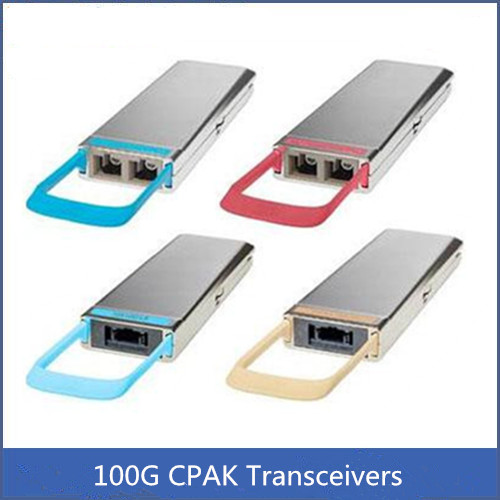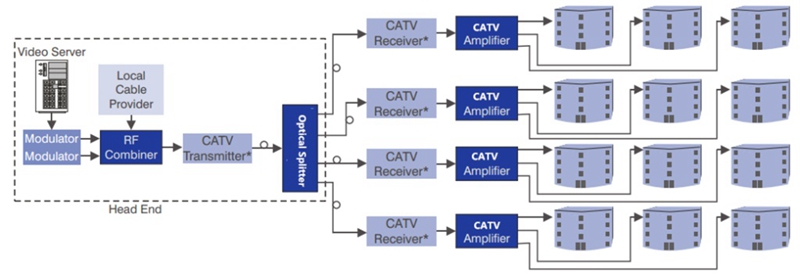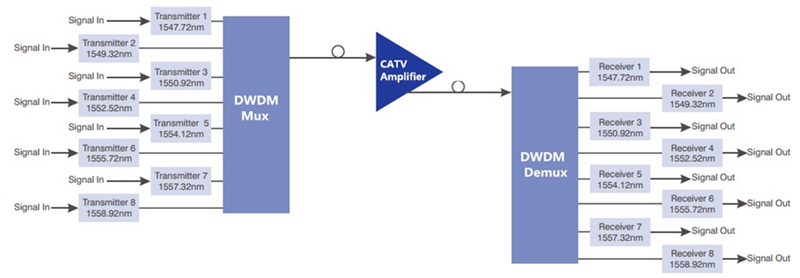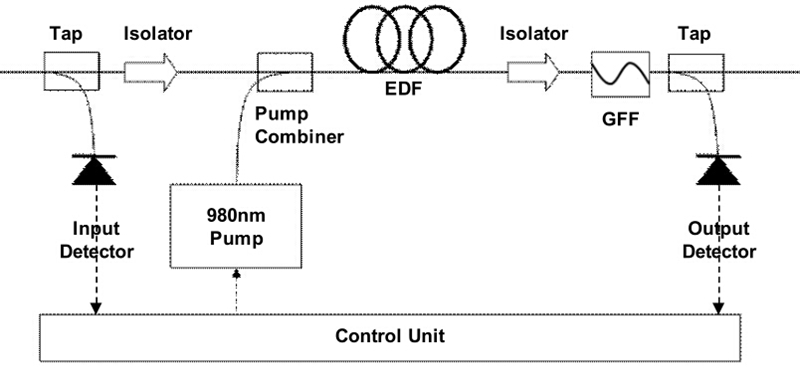Over the past few years, we gave a warm welcome to 100G network market, for meeting our ever-increasing demand. With the prosperous development of 100G optical technology, several 100G transceivers like CFP, CFP2, CFP4, QSFP28 have come out that we may be very familiar with. Except for these common 100G transceivers, CPAK transceiver also plays an important role in 100G network that would be a good choice if you need to deploy a 100G network. What’s the benefits of CPAK transceiver, compared to other 100G transceivers? Why it is an ideal solution to deploy 100G network with CPAK transceiver? Let’s talk about this topic.
CPAK transceiver module is a kind of hot-swappable I/O component for inserting into 100G Ethernet Port of Cisco switch and router, published in 2013 by Cisco. This kind of transceiver has generally 82 pins on its electrical interface, 40 of which are on the top row and 42 on the bottom row. While on its optical interface, there is a duplex SC or 24-fiber MPO connector. In contrast to other optical transceivers, 100G CPAK is distinctive, designed on the basis of complementary metal-oxide semiconductor (CMOS) photonics technology, which features the advantages of high optical integration, performance, power savings, and scalability.
CPAK transceiver has the greatest density and bandwidth but the lowest power consumption which is an ideal 100G solution for data center, enterprise and edge networks. To well serve 100G demand, it has several types like CPAK 100G SR10, CPAK 100G ER4L, CPAK 100G LR4 with different IEEE-standard optical interfaces that can support 100G connections with different distances. You can learn some common CPAK transceivers with different optical interfaces from the figure below.
To face the exploding demand of network bandwidth, 100G solution came into the market with high cost. Under this condition, experts turn to explore the high density but cost effective solution to make the 100G network commonly deployed. And the 100G CPAK transceiver is just the alternative to the existing 100G transceiver that has higher port density and power saving. Let’s learn the main benefits of this kind of 100G transceiver.
Firstly, 100G CPAK transceiver is designed on the basis of COMS technology which solves the limitation of optical interconnect technology. As we know, COMS photonics is a technology that can control the flow of photons in place of electrons by integrating multiple circuit components in a highly efficient design, and then printing entire circuits directly on silicon wafers to produce optical devices. Hence, the 100G CPAK transceiver utilizing COMS technology has a smaller footprint but higher port density, which enables extremely efficient, low-power optical circuits.
Secondly, CPAK transceiver is a 100G power saving and high density transceiver solution, addressing the existing 100G transceivers’ big physical size, excessive heat and power problems. Different from the existing 100G transceivers, CPAK transceiver is designed to decrease the space and power requirements by over 70 percent, while improving the port density and front-panel bandwidth up to 20 percent. It has great improvements in size, power consumption, density and bandwidth for facing the increasing need to scale data center and networking equipment.
CPAK transceiver is an economical choice to deploy 100G network which exceedingly solve the big size and excessive power problems in the existing 100G transceivers. Considering that, 100G CPAK transceiver modules like CPAK 100G SR10, CPAK 100G ER4L, CPAK 100G LR4 are available on the market, with very good price and quality assurance, for better serving 100G users.








